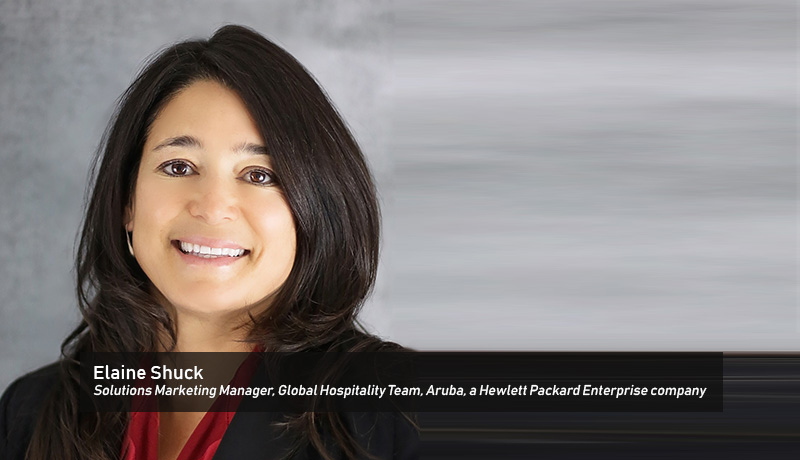
By: Elaine Shuck, Solutions Marketing Manager, Global Hospitality Team, Aruba, a Hewlett Packard Enterprise company
Connectivity expectations in the hospitality industry have accelerated from simply providing mobile connectivity to leveraging wireless and wired network capabilities to make experiences increasingly home-like, while simultaneously improving operations and profitability.
With a range of innovations to select from, we foresee that the following three technology trends will headline your IT to-do lists — regardless of your brand’s size or type.
Trend #1: Know Your Guests Better Than Ever Before
Delivering home-like experiences starts with knowing even more about your guests than before. This requires gathering and leveraging a range of data and analytics for both individuals and in the aggregate. To do so, hospitality providers are focusing on the following:
For example, an ecosystem partner can automatically gather data from multiple sources, such as access points, people counters and POS systems, turn it into insights about how people behave, and enable you to engage with guests based on their preferences or the profile you’ve established.
Or, perhaps you’re a cruise line – where terrestrial backhauls are absent when your ships are at sea – and want to utilize location technology to offer guests app-based wayfinding or give your staff the ability to track equipment and luggage in real-time. In this case, you need an ecosystem partner that tightly integrates location data from your Wi-Fi gear with a vessel’s on-premise positioning and proximity marketing platform rather than the typical cloud-based service.
Trend #2: Morph Your Wi-Fi Infrastructure into a Robust IoT Platform
Advanced Wi-Fi 6 solutions pack so much intelligence into each access point that hospitality industry leaders are now approaching their wireless infrastructure as an IoT platform, capable of enhancing guest experiences and operational efficiencies.
Go greener with energy saving features. Another hallmark of a robust IoT platform is energy efficiency. Such solutions supply the capability for automatic power reduction, where access points put themselves to “sleep” when utilization subsides and “wake” when demand returns. This offers significant savings to anyone with large conference areas, dining rooms or any high-density location where traffic varies over time.
Boost staff safety and operational effectiveness. Improved operational effectiveness, including a staff that feels safer, also contributes to a home-like experience. That’s why hospitality IT departments are adopting location-enabled tools, such as panic buttons for hotel staff that can trigger a trace and report on an individual, even when he or she is on the move. For day-to-day effectiveness, these same solutions can also support trackers to help staff keep tabs on inventory, such as those often-elusive luggage carts, or even monitor a vendor’s staff members who are scattered throughout your property.
Significantly improve everyone’s physical security. In the wake of high-profile adverse events, your guests expect more advanced physical security systems. Established partnerships with leading IoT providers help ensure joint solutions are fully tested and interoperable, improving guest and associate safety from guest rooms to back-of-office. For instance, emergency response solutions can leverage your wireless IoT platform, giving first responders and security staff split-second situational awareness into an entire property. This includes locating and monitoring affected areas, viewing threat entry and exit points, time-stamping incident progress, and conducting real-time communication between staff, responders, on-site contractors, and guests.
Trend #3: Manage Infrastructure at Far-Flung Locations Centrally and Securely
At remote locations, where on-site IT staff is limited, it’s important for corporate IT departments to feel confident with network and application performance at such facilities, as poor guest experiences can damage loyalty and the brand. The maturing of software-defined branch networking gives you the option to centralize worldwide infrastructure deployments to enable secure, simplified branch connectivity at scale. New innovations include capabilities that support a Zero Trust security model at remote locations throughout your footprint and SD-WAN orchestration features that deliver unified SD-Branch management and secure connectivity for cloud workloads. Also, for those using a leading cloud platform provider, adopting an SD-Branch solution that offers proven cloud platform integration capabilities can maximize benefits.
Regardless of how you begin addressing the trends and strategies we’ve discussed, it’s critical for you to advance your experiences to match evolving guest expectations. Doing so also improves employee satisfaction and retention, making innovation a win-win for your bottom line.